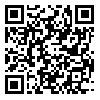Volume 7, Issue 4 (winter 2004)
2004, 7(4): 169-184 |
Back to browse issues page
Download citation:
BibTeX | RIS | EndNote | Medlars | ProCite | Reference Manager | RefWorks
Send citation to:



BibTeX | RIS | EndNote | Medlars | ProCite | Reference Manager | RefWorks
Send citation to:
Sh. Dokhani, R. Beheshti. HPLC Analysis of Dominant Sugars and Organic Acids of Two Apple Cultivars from Semirom Region in Packages During Cold Storage. Journal of Crop Production and Processing 2004; 7 (4) :169-184
URL: http://jcpp.iut.ac.ir/article-1-493-en.html
URL: http://jcpp.iut.ac.ir/article-1-493-en.html
Abstract: (14147 Views)
The changes of main sugars and organic acids of Red delicious and Golden delicious apples from Semirom region in Isfahan Province were determined by high performance liquid chromatography (HPLC). The apples were harvested, graded and packed in three kinds of wood, car-board and perforated polyethylene film packages and stored for eight months at 0±0.5oC and 90 to 95% relative humidity for further analysis. Sucarose, glucose and fructose, as well as citric and L-malic acids were detected and quantified in all packed samples. The obtained data were analyzed with factorial experiment in completely randomized design and mean were compared by Duncan,s muliple range test. The results showed that fructose was dominant in both cultivars in all packages compared to other sugars. Golden delicious apples contained more sucrose and less glucose than Red delicious. All sugars decreased in packed apple samples during the storage period. The dominant organic acid of both cultivars was L-malic. Citric acid increased to its maximum level in Red or Golden delicious after one or two months of storage, respectively, and then decreased gradually by the end of storage period. In general, apples kept in perforated polyethylene films exhibited the best physiochemical properties during eight months of cold storage.
Keywords: High performance liquid chromatography, Apple sugars, Apple organic acids, Red delicious, Golden delicious, Apple shelf life.
| Rights and permissions | |
 | This work is licensed under a Creative Commons Attribution-NonCommercial 4.0 International License. |






